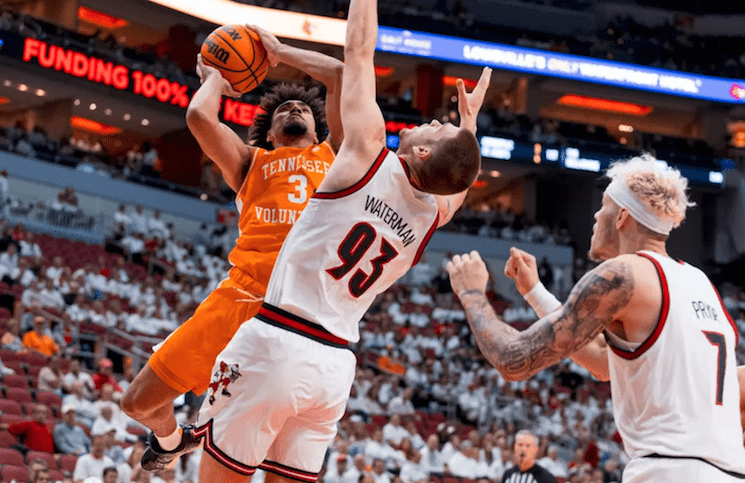
This Week in UT Sports History is a weekly column written by RTI columnist Lexie Little
Type in “Tennessee Volunteers” on Twitter. Scroll through tweets. Misery and frustration color the tone of most, as the 2019 Vols fell to 1-3 on the season after a loss 34-3 loss against Florida in the Swamp on Saturday. The collective memory of Tennessee’s history cause many fans to characterize this point in time as the lowest in the program’s existence.
Twitter certainly perpetuates the notion.
Whether that notion is true or not, escape the misery by examining games that well predated social media, and even television, in “This Week in UT Sports History.”
Sept. 29, 1929
One Kentucky colonel remains known for chicken, but other Colonels played a little football to open the 1929 season against the Tennessee Volunteers. The Centre College Colonels traveled from Danville, Kentucky, to Knoxville where they looked to take down the big team to the south on Shields-Watkins Field on Sept. 29, 1929.
Sportswriter J. Sterling Towles covered the team for the Courier-Journal in Louisville ahead of the match-up.
“The players are confident they will surprise the Volunteers tomorrow afternoon,” Towles wrote. “According to the weights available from the managers, the Colonels will take the field with a total avoirdupois of 1,915 pounds, and the Vols will weigh out at a total of 1,918 pounds.”
The Colonels thought the Vols outweighed them by more than several fried chicken meals, but their men up front remained comparable. In fact, some of Centre College’s positions outweighed their Tennessee counterparts. Centre College’s quarterback Shearer outweighed Tennessee quarterback and Kingsport, Tennessee native Bobby Dodd (as in Georgia Tech’s stadium, Bobby Dodd) by five pounds at 170 and 165 respectively.
But body weight did not carry much weight.
Head coach Robert Neyland’s Vols handed Centre a 40-6 loss. Towles described the heat in Tennessee as “oppressive,” but so was Neyland’s defense. That season, Tennessee outscored opponents 330-13 with eight shutout wins, only losing one game. The most emphatic win came against Carson-Newman when the Vols won 73-0. The Vols also beat future Southeastern Conference foe South Carolina 54-0 to close the 1929 season, hoping to set a precedent for the future.
Sept. 25, 1942
Another year, another match-up against South Carolina. But this time, then Lt. Col. Robert Neyland did not roam the Tennessee sideline as head coach. When young men, many of them college athletes, went to war, the War Department organized teams from military bases to play full schedules against depleted squads and National Football League teams to raise money for the Army Emergency Relief fund. In 1942, World War II called Neyland to back to active duty as the head coach of the Eastern Army All-Star team.
Coach John Barnhill stepped into the role for Tennessee, hoping the success train would not go off the rails.
Trains seemed problematic.
“The University was notified last minute that pullman cars would be unavailable,” the Associated Press reported. “The Vols had intended leaving Knoxville Thursday afternoon, but changes in schedules necessitates departure at 6:10 a.m. instead [on day coaches].”
The Vols’ starting lineup seemed to derail before leaving Knoxville when another Kingsport native, tackle Denver Crawford, injured himself during a scrimmage two days prior. Down a man and taking two freshmen on the trip, Coach Barnhill said he “would be glad to settle for a touchdown victory.”
No such luck.
The Vols tied with the Gamecocks 0-0 in what was then a non-conference game. Tennessee joined the Southeastern Conference while South Carolina remained in the Southern Conference. The Gamecocks went 1-7-1 that season with the only win coming against the Citadel.
So, how did Tennessee perform the rest of the season after tying with the dismal Carolina team? The Vols got back on track, finishing the season 9-1-1 as Sugar Bowl champions.
Sept. 24, 1956
Knoxville Journal sports editor Ed Harris continued a tradition of reporting travel plans as the Tennessee Volunteers and head coach Bowden Wyatt set out to face Auburn, not on the Plains, but in Birmingham. They traveled not on planes, but again on trains.
“Wyatt and his Vols will entrain for Birmingham Friday night,” Harris said. “Special cars have been added to the regular Southern Railway train that night for the Vols and also fans who will accompany the team.”
At the time, officials expected a large crowd for the game, anticipating a sellout of 44,000 – significant for the era pre-super stadiums. The match-up marked the first for the two teams since 1939, and all eyes remained on the Volunteers and the Tigers.
The Tigers seemed to have their claws sharpened for the season opener.
“The Vols will need to be in tiptop shape as they can expect Auburn to use plenty of wide running plays, plus an aerial display that could rank favorably with any in the South,” Harris wrote. “[Howie] Tubbs is an effective forward passer, also an excellent runner.”
The Vols needn’t worry about Tubbs.
Tennessee won the game 35-7 against Ralph Jordan’s Tigers. Jordan, only in his sixth season, would bounce back in later years earning a record of 176-83-6, making him the winningest coach in Auburn history and leading to the addition of his name on Jordan-Hare Stadium in the Plains.
That season, the Vols earned a record of 10-1 with the only loss coming in the 1956 Sugar Bowl against Baylor. They finished No. 2 overall in the AP Poll.
The 2019 Tennessee Vols have a week to rest and make adjustments before facing No. 3 Georgia at Neyland Stadium in Knoxville on Oct. 5.



